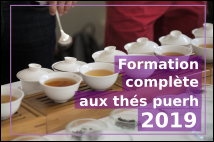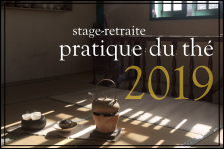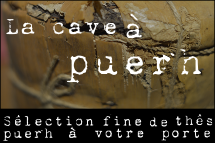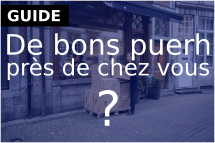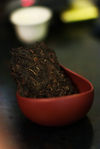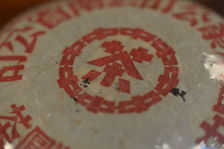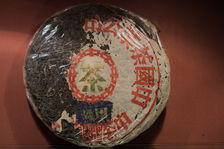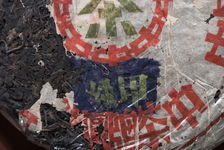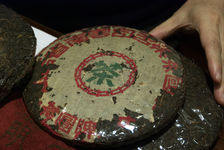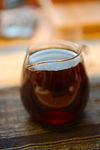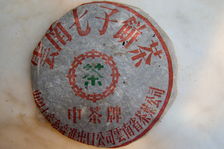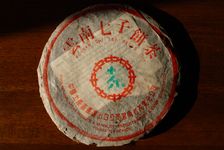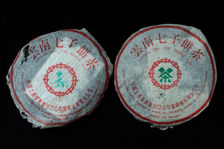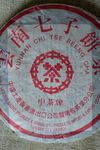 This page is not a real translation but just an automatic translation generated by computer of the original article, written in French language! Its not good... but better than nothing!
This page is not a real translation but just an automatic translation generated by computer of the original article, written in French language! Its not good... but better than nothing!Want to help us do diffuse puerh tea culture in english, by providing a better (or corrected) translation?
Please contact us!

You've probably already seen puerh (Pu Er tea) patties sold on the vendor stalls or on the Internet, such as red mark, red label , blue mark , green label , green label , With a lot of variations that give the tea name a touch of "expert jargon", such as big red mark , small yellow label , big Blue mark , yellow mark eight characters , green mark simplified characters , etc., pages of examples of this type could be filled.




- 1.Examples of teas sold as Red Mark on the Chinese Internet
- 2.Sample of cake sold as Green Mark
- 3.Different Chi Tse Beeng colored
- 4.Teas sold as Yellow Marks
These are generally inexpensive puerh, green or fermented, produced after the 1990s and whose packaging more or less resemble those found in collectors' books. From the start, the one who discovers the world of the puerh (Pu Er tea) says that all this must have a meaning, that these teas are known references, that there must be something that binds together the different "green marks" or "red marks" And that behind these patties there is a complex world to understand and to explore ...
We will see, however, that this is not the case. Contrary to appearances, and unless you have inadvertently passed the door of a Hong Kong collector's shop where the cakes start at a few thousand Euros, these teas ultimately have neither much meaning nor great interest, And their names are actually used completely arbitrarily, irrelevant to the nature of the tea they describe ...
Where do these strange names come from?
Where do these names come from, which are not on packaging (not even in Chinese) and that so many sellers like to use to designate their products?
These names, precise and unanimously acknowledged by connoisseurs of old teas, appear well in all the serious books on the ancient puerh, and designate in the jargon of the collectors a certain number of known cakes. But these were strictly produced more than 40 years ago, during the era of the Yin Ji Cha (sometimes also called the Masterpiece era in English), that is to say between the beginning of the 50s and the beginning Of the 1970s, before the appearance of the "Chi Tse Beeng Cha" (which can not be on a Red Mark, Blue Mark or Green Mark).
The only exceptions to this is perhaps the Orange brand, which is a 1996 tea, which the sellers have since its production called so, and which has gotten into the jargon, or the Marque Bleu aquatique , which are teas discovered in the 1990s, whose names do not represent ambiguity (since no other tea s 'So called before), and for which everyone agrees that they have nothing to do with the other' marks' of the Yin Ji Cha era.
The name given to this period (1950-1970) in the history of the puerh, "Yin Ji Cha", refers quadn to him to the names that were given to these teas: Hong Yin I> ) ), Which all end with "Yin" (Trademark or Mark). Huang Yin
These names, accurate and recognized by all collectors for over 20 years should therefore be used only to designate the teas to which they refer. Using them today for other productions, especially for contemporary teas makes no sense, except that of scamming the beginner.



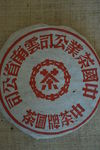
- 1.Genuine Red Mark
- 2.Red Mark sold as years 2000
- 3.Teas sold as Red Mark on the Chinese Internet
- 4.Red Brand's recent counterfeiting
Red Mark or Red Label in English (or Red Mark Round Tea Cake > In the long version), thus designate the first cakes produced by the state factories between the 1950s and the 1960s. These cakes are by far the most known and sought-after puerh, and are also among the most expensive Of the market (counting a few tens of thousands of Euro the cake). Since the Red Marks have been produced for more than 10 years, collectors distinguish between different Red Marks according to their period of production ( Mark Red, wide, medium or extra fine characters, etc.)
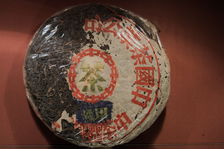
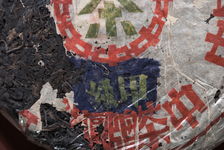

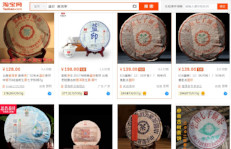
- 1.Genuine Blue Brand
- 3.Blue Brand Counterfeiting
- 4.Galettes sold as Blue Brand on the Chinese Internet
Blue Label , or Blue Label , or Blue Mark Round Tea Cake > In the long version) are teas that were produced between the mid-1950s and the mid-1960s. Their packaging but especially their recipe differs from the Red Marks (and are notably known to be produced with Menghai tea, Where the material of the Red Marks comes exclusively from Mengla), which gives them a very different character. Several series of Blue Brands exist such as Blue Brands Grade A and Grade B, Blue Brand version peach or vermilion, etc ...
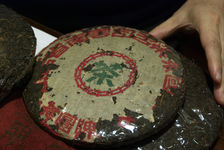


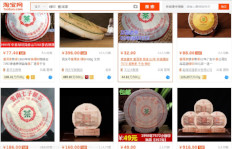
- 1.Genuine Green Mark
- 2.Tea sold as Green Mark
- 3.Copy of Chi Tse Beeng sold as Green Mark
- 4.Teas sold as Green Brand on the Chinese Internet
Green Mark or Green Label in English (or Blue Mark Song Character In its exact name) are teas produced between the mid-1950s and the mid-1960s. The Green Brands also include different teas (Green Label and disc, Green Mark typo artistic, etc.).
Huang Yin , Yellow Markets in English, Yellow Mark or Yellow Label, mean several sets of wafers and discs produced between Late 1960s and 1970s. These puerh (Pu Er tea) are the latest teas of the Yin Ji Cha era, and for the latest production of the 1970s (also known as Yellow Mark Chi Tse Beeng) The era of Chi Tse Beeng Cha. As for the other Yin Ji Cha, the family of Yellow Marks includes a number of teas, recognizable by their shape, their packaging or their particular flavor (Yellow mark Yellow and Yellow, Yellow Brand, Green, Yellow brand Chi Tse Beeng, Yellow brand "with conscientious prescription", Yellow mark typo artistic, etc.). The Orange brand is an exception, and is a precise tea produced in 1996, which is not strictly speaking part of the Yin Ji Cha era.
Why these names, and what do they mean?
But why do all these strange names and where do they come from? These names come from the jargon of collectors and amateurs and were given to a number of ancient teas, produced between the 1950s and the 1970s. Although this jargon is very specific, listed in many works and recognized by all, And that these names are therefore unequivocal, it is not the "official" name under which these teas were marketed, but rather names that were given afterwards to designate these teas, and they therefore naturally appear on No packaging.
To understand the need for amateurs and collectors to "stick" such names on a number of patties, it should be remembered that in the state factories (1950-1995) the teas did not have names To differentiate them. Even worse, before the 1970s there was no identifiable serial number or recipe, nor any indication at the time of production.
When the first individual wrappers of wafers appeared in the 1950s (before they packed 7 wafers together in bamboo leaves without any other packaging), they were naturally printed in red, in the color of the party that had just been To impose in China and to obtain the exclusivity of the production and the sale of the tea. In the middle of the wafer is placed a large tea character (茶), surrounded by eight characters Zhong (中, like Zhong Guo, China or literally the middle country), and which will become the logo of Zhong Cha (中 茶) A state mark under which all the puerh (Pu Er tea) were marketed until the 1990s. On the circumference one simply writes "China Tea Company, Branch of Yunnan" (中茶 業 公司 雲南省 公司 公司) and "Round Tea Yunnan "(中 牌 圓 茶 茶), a name that refers to tea cakes before the Chi Tse Beeng era, where round tea (Yuan Cha) was replaced by tea cake (Bing Cha). It is this same packaging that was used for 10 years, whatever the teas, their quality or their year of production.
Later were introduced two new recipes of different qualities, and for this two new packages on which appeared the grade of tea, but faced with the commercial failure of these new products this idea was swept away quickly. In order not to spoil the packaging already printed (we must remember it in the communist era), we simply hid the indications of rank behind a large rectangular spot of blue ink (which will become partially translucent with time) and these Packaging was used for another tea until the stock was depleted. Once all the packaging had passed, new papers were re-printed, without the notions of rank this time, and of course without blue stain!
Among these re-impressions, which will be drawn regularly for 20 years, there are lots, especially late, whose quality of green ink left to be desired and whose color will turn yellow with time ... everal times , Were also experienced with menu changes, especially in typography (the famous "typo artistic" series for example) to try to touch other markets or try to renew the image of this product, especially for export.
The 1970s then marked a major turning point in the history of the puerh. Different changes take place in the way teas are produced and assembled. The name "Chi Tse Beeng Cha" (七 子 饼 茶 茶, or Seven Wafers of Yunnan) replaces the old name "Yuan Cha" (中 牌 圓 茶 茶, or Round Tea from Yunnan) and is now on the circumference Pancakes. Shortly after a transcription of Chinese in Roman characters is also invited on the packaging.
When the value of puerh (Pu Er tea) is rediscovered in the 1980s, but above all in 1990, and the cakes produced before the 1970s began to emerge from the stock of Hong Kong tea houses, amateurs and collectors find themselves in front of a multitude of patties , Whose packaging seems at first sight all identical, but which contain teas produced over a period of nearly 40 years, with very different nature and characters!
A jargon thus begins to take shape to designate these teas. The red patches are naturally called "Red Marks" (Mark is to be taken as a "trademark" or "trademark" and not as a "trademark" or Trademark), those with a large blue spot (to hide the indication Of the grade) are called 'Blue marks', those whose 'tea' character is printed in green (and which replace blue-spot packaging) are designated as 'green marks', those whose green color is yellow Called "Yellow Marks", etc.
Little by little jargon becomes more complex. For example, the wooden dies used to print the packaging of the Red Marks have become worn over time and tend to be refined, so that the width of the characters is an indicator of the age of the tea Thus the notions of red marks wide characters, fine, extra fine, etc.), we still have the existence of certain series that can be identified by unintended details of the packaging (red mark red dot, "conscientious prescription", etc.). Finally classifications appear according to the gustatory character of tea, to define whether or not tea belongs to a particular family. So for example the green brands, are actually part of the larger family of blue brands, because both are based on the same assembly.
Why reuse these names several decades later to designate other teas does not make any sense (if not to deceive the consumer)?
The 1970s inaugurated new approaches in tea production and marked a turning point in the history of puerh. It is the end of the various "colored marks", and the beginning of the Chi Tse Beeng Cha era and four-digit recipes (7542, 7572, 8582, etc). The wafers, now known as "Chi Tse Beeng Cha", display a new standard wrapping pattern, green (the caractère character) and red (the rest of the wafer), easily identified by the inscription 七 子 饼 茶 茶 on The upper part, and which will be used, with some variation, until the 1990s.
Since they no longer have any reason to be identified by their color, these teas are now designated by their origin (factory), the recipe of the assembly and their age, information that does not appear on the packaging of the galettes, We find on the tickets that accompany the Jian (basket of 84 or 42 patties).This will include a 7542 of the 1990s, a 8582 of the 1980s, a 7542 Menghai Tea Factory of 1996, and so on.
The 1990s will finally mark a turning point in the universe of puerh (Pu Er tea) tea:This is the end of the period of state factories, and the opening of the market.From then on, everyone can freely create their own tea company, and market their own cakes Not surprisingly a multitude of producers see the days, and the market is suddenly flooded with products of all types, with varying styles and quality.
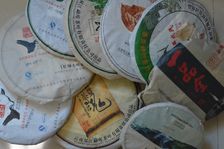
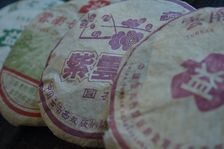
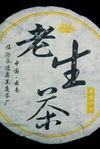
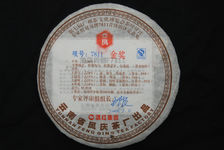
- 1.Mengku Rong Shi's New Era Cake Examples
- 2.New Menghai Tea Factory Packs of the Years 2000
- 3.Examples of New Age Cakes by Lan Ting Chun
- 4.Galettes of the new era by Fengqing Cha Chang
To differentiate themselves from their competitors, to construct their images and to identify their different products, each producer develops his own visual identity, his own packaging, and gives his productions names or references that belong to him. State-owned factories, some of which are privatized, follow suit and also develop a multitude of packaging, more modern, more loaded, and more expressive for their different teas.
At the same time, many unknown factories, but sometimes also state factories or state-owned factories (such as Zhong Cha's heirs) continue to clone or draw inspiration from past communist packaging by borrowing Completely arbitrary design and colors used 30 years before.
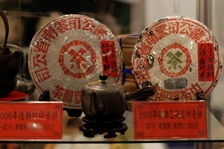
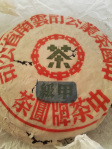

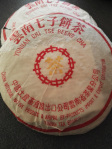
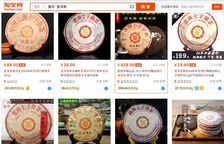
- 1.Copies of Red Marks and Blue Marks produced in the years 2000
- 2.Coarse copy of Blue Mark
- 3.Imitations of Chi Tse Beeng Cha sold as Green Marks
- 4.Imitations of Chi Tse Beeng Cha sold as Yellow Brands
- 5.Teas sold as Chinese Internet brand
Among these teas we find true counterfeits, which take as precisely as possible the packaging of such and such great teas of the past. But we also find and especially a multitude of teas which only take very roughly these classic packaging, merely to include the same inscriptions (The Zhong Cha logo in the center of the galette, Yunnan Chi Tse Beeng Cha on the periphery, etc.), Without strictly respecting the typo or the sizes of origins, like the multitude of bags "Louis Vuitton", or T-Shirt "Chanel", "Dior" or "Nike" On the stalls of all the Chinese markets, and which in the end deceive no one.As with these fake designer clothes, we often find "typos" on the packaging of these pancakes, especially on the English version of the Nei Piao (a small informative ticket that accompanies the galette) which is sometimes stuffed with errors.
And it is precisely these teas, produced recently that have absolutely nothing to do with the red, blue, yellow or green brands of the 1950s and 1960s that are regularly sold on the Internet or in tea shops as Red, Green, Blue or Yellow labels or labels. Of course, calling these cakes in this way makes no sense, if it does not give the impression to the neophyte that these are classical or renowned teas, where this is not the case.
It should be noted that the majority of the cakes sold as "Marques Vertes" do not really take the design of the true Green Marks, but are simply copies of "Chi Tse Beeng Cha" recent, easily recognizable to the presence of Western characters (YUNNAN CHI TSE BEENG CHA), which were not on the packaging of the 1960s! The mere fact that a character 茶 (tea) is printed in green in the center of the cake, which is the case with almost all the teas produced between the years 1970 and 1995, is enough for these teas to be sold By some as "Green Mark".
The teas sold as "Marque Bleue" often take on the design of the old "Red Marks", printed in blue for the occasion, which has never existed in the past and does not correspond to the original "Marques Bleues" (Whose packaging contains only a blue spot).
What are these teas with misleading names?
Behind these wrappers there is everything:nothing but raw puerh, fermented puerh, leaves of all types, all sizes, dry, wet teas. Moreover, the use of this or that "color" being completely arbitrary, no link can be made between the color announced and the tea it contains. There is no need, therefore, to speculate on the type, taste or quality of a 'traditional green brand' of the 1990s in the face of a 'small yellow label' of the 2000s, or 'small light blue schtrumpf' Ultimately give no indication whatsoever of the tea they designate. It is not necessary to ask an expert for advice, or to send me a picture of your cake, these packages being standard, and widely used by a multitude of anonymous producers, it is totally impossible to decide on the nature or the quality Of the tea from its packaging.
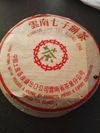
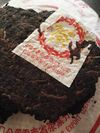
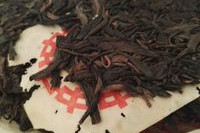
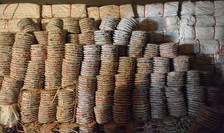
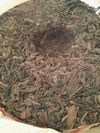
- 1.Counterfeiting of Chi Tse Beeng Cha sold as a Green Mark
- 2.Counterfeiting of Chi Tse Beeng Cha sold as a Yellow Mark
- 4.Counterfeiting in a specialized factory
- 5.Counterfeiting of Chi Tse Beeng Cha
There is first of all in these teas authentic "Chi Tse Beeng Cha", genuinely out of state factories, whose packaging is unequivocal (it is written Chi Tse Beeng Cha wholesale on), But who will sometimes find themselves sold to the neophyte as Green Marks. These teas, which have nothing to do with a Green Maque can however be excellent, but it is worth remembering that the teas truly released from the major state-owned factories before 2000 are rare teas - a taste in the midst of a Ocean of counterfeit - and now expensive (count at least several hundred Euros for a genuine Chi Tse Beeng produced before 2000, but we soon pass the 1000 Euros mark for older teas), and that therefore they are not Teas that have found in all the shops.
On the contrary, the so-called "colored marks" that flood the market and are aimed at the non-connoisseur are generally very cheap teas. In the vast majority of cases their quality and very average, serious producers generally prefer to put forward their name, their image and the specificity of their teas instead of covering them with generic and annonymous packaging. Moreover, as generally no information is given on these packages, any traceability of the origin, or of the factory producing these teas, is impossible.
Some producers, especially at the beginning of the 2000s, were inspired only by the general "style" of classic packaging, which they revisited to include their own name, and thus play on the classical aspect of tea while claiming. These teas can be very good, and for their part have nothing to do with counterfeits, as long as they do not end up sold after an absurd name of the type "red /blue /green".
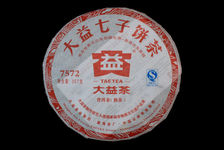
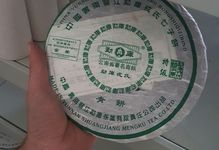
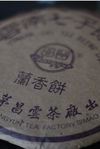
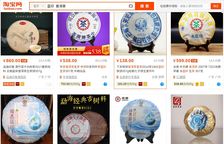
- 1.Galette Menghai Tea Factory that could easily be sold as a Red Label
- 2.Galette Mengku Rong Shi that could easily be sold as a Green Label
- 3.Galette Chang Yun which could easily be sold as a Blue Label
- 4.Teas sold as Blue Brand on Chinese Internet
In the same vein, there are also many teas produced recently by private producers whose packaging does not include the classic teas of the Yin Ji Cha era, but which some sellers still sell as " Green "," blue mark ", etc, under the pretext that one finds this color somewhere on the packaging, or to hide the true name of the tea.
Finally, but it is much rarer, there are real imitations of the original "marks", generally produced in the 90s or earlier. These teas, rare and much more expensive (count a few hundred Euros the cake), are real copies of counterfeiters, from the aspect of the leaves to the finest details of the packaging. Among them have found excellent teas, which do not equal the original 20 years older than them, but that are sometimes very good puerh (Pu Er tea) of 20 years of age!
Why are these teas dubious and why they should be avoided?
I generally advise against buying this type of tea, unless I have been able to taste it and its quality is worth it (in the case of authentic old Chi Tse Beeng, or real fine counterfeiting of the 1980s or 1990s example). First of all because in attempting to mislead the inexperienced amateur, they obviously reflect a lack of knowledge or some dishonesty of the producer or seller.
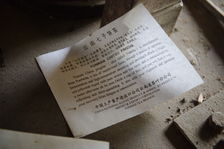
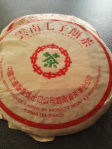
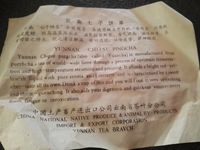
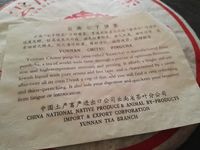
- 1.Nei Piao counterfeit in a factory specializing in forgeries
- 2.Counterfeiting Chi Tse Beeng Cha
- 3.Nei Piao counterfeit a fake Chi Tse Beeng Cha
- 4.Nei Piao counterfeited a false Chi Tse Beeng Cha
Then because these teas do not present any traceability. It is impossible to know where the leaves of which they are made come from, under what conditions they have been produced, fermented, stored, and in some cases this can be very doubtful. One can also in general cast serious doubts on the supposed age of these teas and the multitude of inexpensive "Marques Vertes" found in China for only a few Euros and which claim to have been produced in the 1990s, Are often shu cha barely out of factory ...
Finally and may be mainly because their quality often leaves much to be desired. Any serious producer prefers to put forward his work, rather than hiding behind standard and anonymous packaging. Like wine counterfeits, which are common in China, this type of production is most often teas of poor quality, ordered in bulk from unscrupulous factories (and often specialized in counterfeiting), to flood the markets, The Chinese supermarkets and tourist shops.
So we usually find much better teas on the side of little known producers but who assume their work and produce teas under their own names.
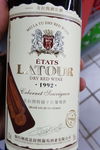

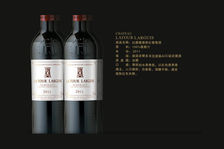
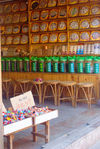
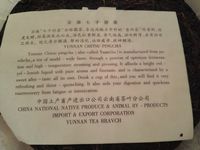
- 1.Etats LATOUR Grand vin de Bordeaux
- 2.Louis vton BORDEAUX
- 3.Chinese add for Chateau Latour Largus
- 4.Lijiang Tourist Tea Store
- 5.Nei Piao of Chi Tse Beeng roughly counterfeit
To take an example that I think will be speaking, even if you are looking for a cheap table wine to make a picnic, you most likely would prefer to refer you to a small local producer, rather than buying a dubious bottle sold for 5 € As a wine rennomé "STATES LATOUR GRAND WINE OF BORDEAUX 1992", or "LOUIS VTON BORDEAUX" (do not laugh, we usually find this kind of thing in Chinese supermarkets!).
And what about the Tongqing Hao, Song Pin Hao and other ancient producers that we have seen recently appear on the market?
Since the 1990s, but still today, it is common to see wafers of unknown producers, whose packaging resumes (usually without any other indication) the logos of former historical producers (which disappeared in the 1950s ) Such as Tongqin Hao or Song Pin Hao .
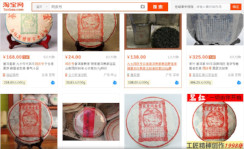
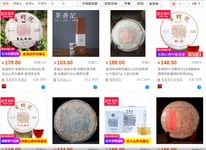
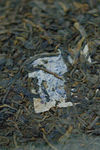
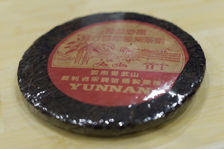
- 1.Copy of Tongqing Hao on the Chinese Internet
- 2.Copy of Songpin Hao on the Chinese Internet
- 3.Contrefaçon de Songpin Hao
- 4.Songpin Hao's counterfeiting
As the "marks of all colors" of which we have just spoken, these are naturally counterfeits and generic teas (some say "homage" or "tribute", but they are euphemisms), packed in the colors of great historical teas To better sell or deceive the beginner. There is therefore no true Song Pin or Tong Qing of the 1990s or 2000s, and a tea sold as such can be anything and everything that has Been packed to the color of those great names of the past.
It should be noted in passing that if these teas take up the original logos of these former producers, they find themselves flanked on paper packaging, which is funny when we know that this type of individual packaging is a creation of state factories And appeared after the closure of these former private workshops. In short, discovering an authentic cake of Song Pin Hao with a printed packaging, it's a bit like digging up a can of beer from 1910 ...
More recently, various Chinese brands have also appeared on the market, which openly take over the names and logos of these great historical producers, suggesting a certain continuity with the latter.
This is the case, for example, with the brand newly arrived on the market, which is proudly displaying its "since 1736" packaging, which is now well positioned in many boutiques. Airports ... It is this time very official and one would almost believe if the only thing that the legal owners of these brands had done was to deposit names and designs of these old producers, who had remained available And unprotected until then, no descendants of these families being alive.
For, unfortunately, there really is hardly any trace of the great historical producers of before 1950, except a few rare cakes that survived the time (see Song Pin Hao, tasting a myth ), and sometimes some scraps of ancient stories. The communist era, then the cultural revolution, have indeed made a radical household, closing the workshops, destroying as well as possible any trace of ancient culture, and these producing families have perished, or fled abroad where one has Eventually lost track.
This "return" of the old historical producers is, therefore, once again an illusion without meaning. From the past displayed by these galettes there is only one name, and unfortunately these teas do not even try to reflect, by their style or their recipes, the large galettes they have taken the image ...

